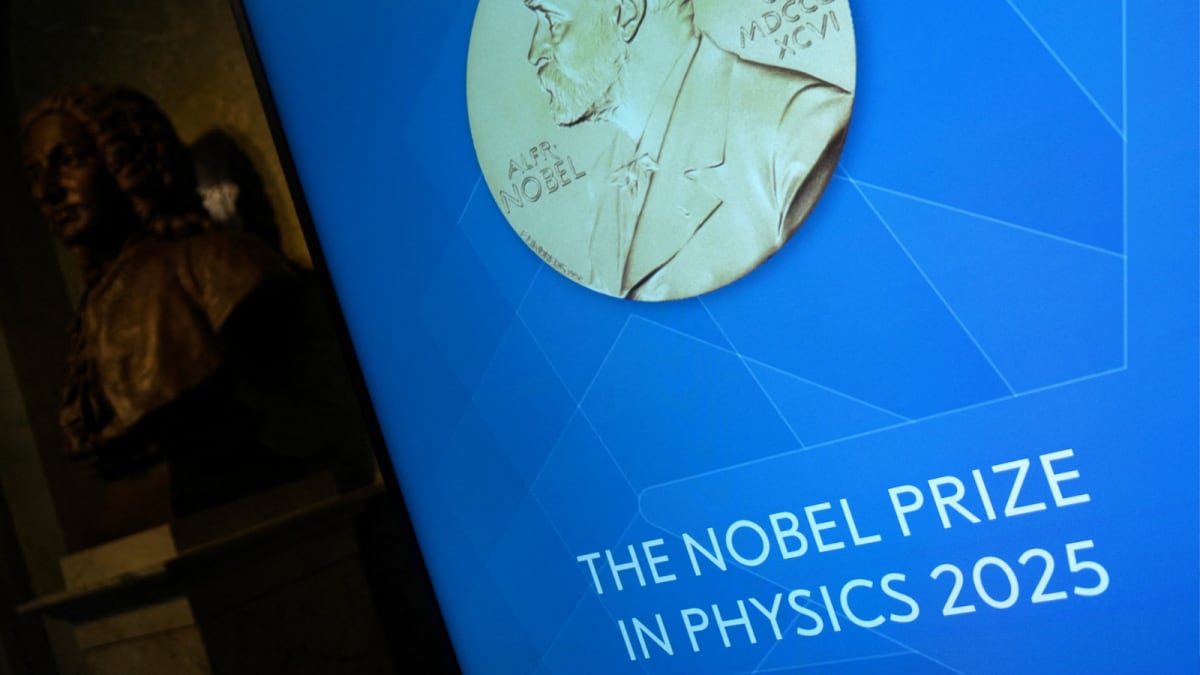Last Updated:
John Clarke, Michel H. Devoret and John M. Martinis win the 2025 Nobel Physics Prize for breakthroughs in quantum circuits and technologies. Who are they?

The 2025 Nobel Prize in Physics has been won by three scientists- John Clarke, Michel H. Devoret and John M. Martinis.
The Royal Swedish Academy of Sciences has awarded the 2025 Nobel Prize in Physics to three scientists- John Clarke, Michel H. Devoret and John M. Martinis- “for the discovery of macroscopic quantum mechanical tunnelling and energy quantisation in an electric circuit.” Their pioneering experiments have made it possible to observe quantum phenomena on a scale large enough to hold in the palm of a hand.
“It is wonderful to be able to celebrate the way that century-old quantum mechanics continually offers new surprises. It is also enormously useful, as quantum mechanics is the foundation of all digital technology,” said Olle Eriksson, Chair of the Nobel Committee for Physics. According to the committee, the laureates’ work lays the foundation for “the next generation of quantum technology, including quantum cryptography, quantum computers, and quantum sensors.”
Recommended Stories
John Clarke- The Quantum Pioneer from Berkeley
Affiliation: University of California, Berkeley, USA
Born: 1942, Cambridge, UK
Education: PhD, University of Cambridge, 1968
A veteran experimental physicist, John Clarke is a towering figure in the study of superconductivity and quantum interference. At the University of California, Berkeley, John Clarke’s career has been marked by a series of breakthroughs in superconducting quantum devices, including the development of SQUIDs (Superconducting Quantum Interference Devices) used for ultra-sensitive magnetic field detection.
In the 1980s, John Clarke teamed up with Michel Devoret and John Martinis to probe how quantum tunnelling- a process where particles pass through barriers that should be impenetrable- could occur in larger, engineered systems. Their experiments demonstrated that an electric circuit built from superconductors could exhibit quantised energy levels, behaving in ways that mirrored the quantum world.
John Clarke’s contributions have influenced not just fundamental physics, but also practical technologies, from quantum sensors to the development of superconducting qubits for quantum computing.
Michel H. Devoret- The Bridge Between Theory And Experiment
Affiliations: Yale University, New Haven, CT, USA; University of California, Santa Barbara, USA
Born: 1953, Paris, France
Education: PhD, Paris-Sud University, 1982
Michel Devoret is known for his rare ability to merge elegant theoretical insight with cutting-edge laboratory precision. Currently a Professor at Yale University, Michel Devoret has dedicated his career to exploring how quantum effects can be engineered and controlled in electric circuits.
During the mid-1980s, Michel Devoret, alongside John Clarke and John M. Martinis, helped construct the Josephson junction system- a superconducting circuit separated by a thin layer of non-conductive material. Their meticulous work showed that the collective motion of countless electrons could behave as if it were a single quantum particle, a finding that defied classical intuition.
Michel Devoret’s research continues to shape the frontiers of quantum computing, particularly in the field of superconducting qubits- the heart of modern quantum processors. His work bridges the gap between the abstract realm of quantum physics and the tangible technologies shaping the 21st century.
John M. Martinis- The Quantum Engineer
Affiliation: University of California, Santa Barbara, USA
Born: 1958, USA
Education: PhD, University of California, Berkeley, 1987
A leading figure in experimental quantum computing, John M. Martinis transformed the insights of John Clarke and Michel Devoret into functioning quantum devices. As a professor at UC Santa Barbara, John M. Martinis has played a central role in building circuits that harness quantum mechanics for computation.
His early work in the 1980s established the macroscopic evidence for quantum tunnelling and energy quantisation in superconducting systems. Decades later, John M. Martinis led the Google Quantum AI Lab, where his team achieved a historic milestone- demonstrating quantum supremacy, a computation completed faster than any classical supercomputer could manage.
John M. Martinis’ lifelong pursuit of precision and control over quantum systems exemplifies the evolution from fundamental physics to real-world quantum technologies.
Quantum Mechanics On A Human Scale
The trio’s Nobel-winning experiments- conducted in 1984 and 1985- proved that quantum mechanical properties can manifest in large, engineered systems. Using superconducting circuits and Josephson junctions, they showed that an electric current could “tunnel” through an energy barrier and that the system’s energy levels were quantised- absorbing and emitting only specific amounts of energy.
This breakthrough fundamentally changed how scientists understand the boundaries between the quantum and classical worlds. As the Nobel Committee noted, their work has opened “opportunities for developing the next generation of quantum technology, including quantum cryptography, quantum computers, and quantum sensors.”
Delhi, India, India
October 07, 2025, 15:44 IST
Loading comments…
Read More



)